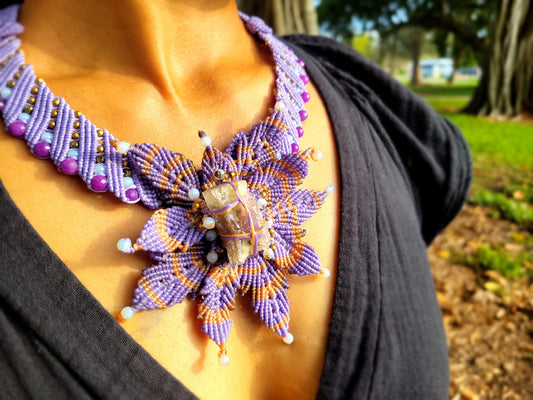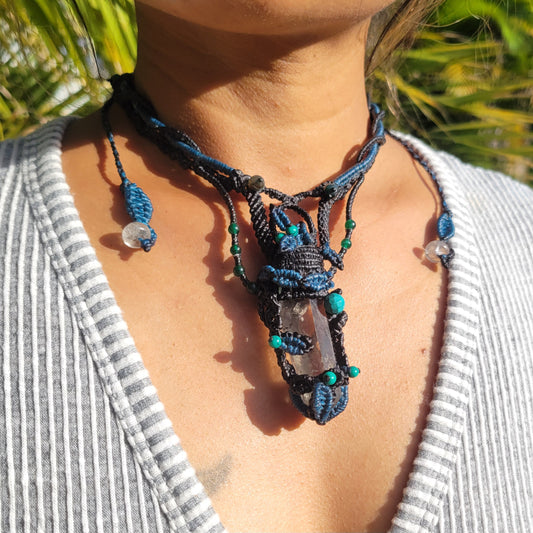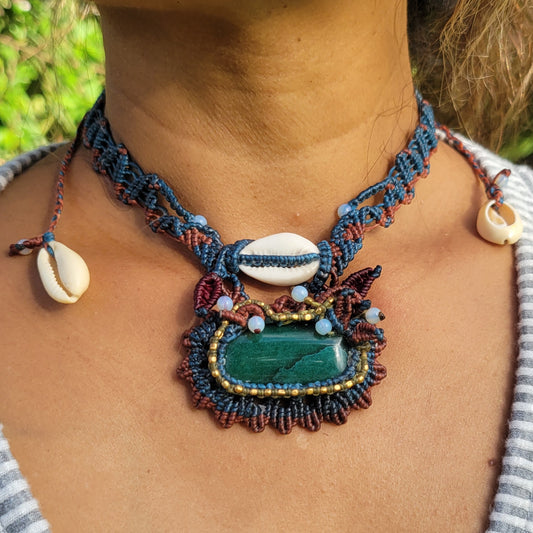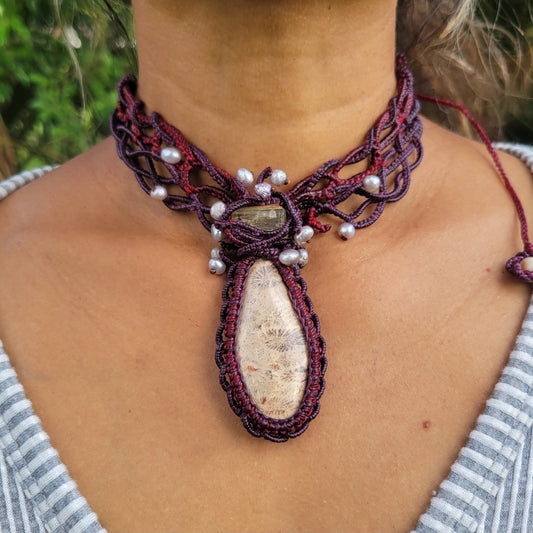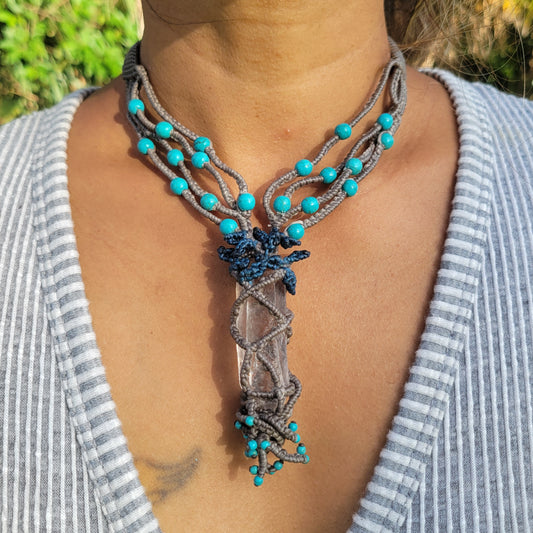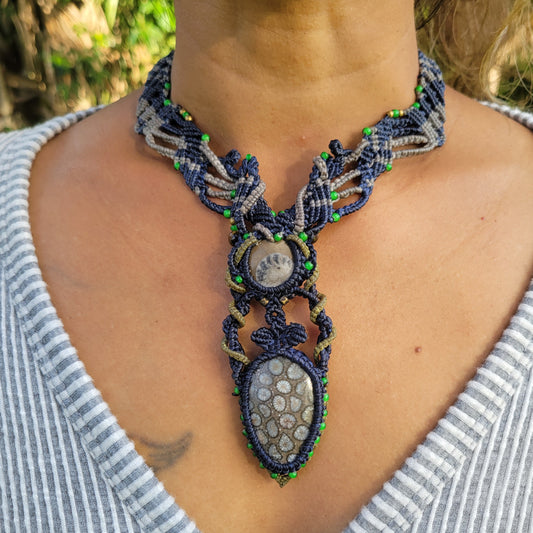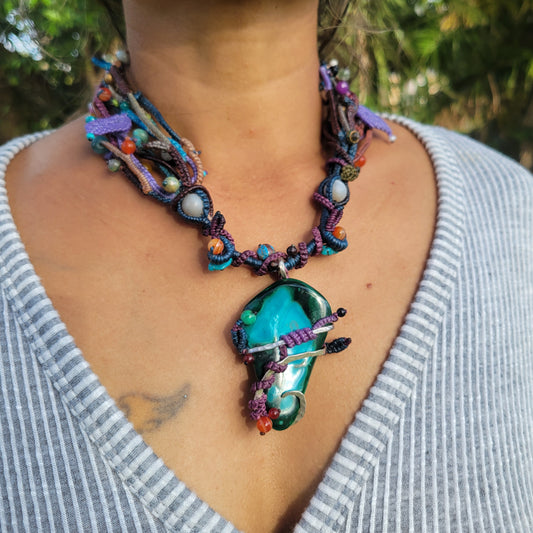
Agatized Coral: Ocean Jewelry That Tells a Story
Share
Agatized coral is a stunning paleontological gem: ancient coral colonies whose original calcium‑carbonate skeletons have been replaced molecule‑by‑molecule with silica (chalcedony/quartz) over millions of years. These remnants of ancient marine life turn into stunning gems that each contain a unique story.
In Florida — where I source the material used in my jewellery — these formations are found in deposits once under an ancient ocean, millions of years ago. Today, with sea levels lower, dug up by small, family‑run operations , ensuring ethical, low‑impact harvesting.
How is Agatized Coral Formed?
The formation of agatized coral begins long ago in an ancient shallow, tropical sea. There, hard corals formed the foundation flourishing ecosystems that were habitat for millions of species. These hard corals (of the order Scleractinia) produce a skeleton of calcium carbonate (CaCO₃), similar to limestone.
Illustration by Ernst Haeckel from Kunstformen der Natur (1904), Plate 26: “Hexacoralla” — depicting hard corals of the order Scleractinia. Public Domain. (Wikimedia Commons)
Since the moment the Atlantic Ocean first formed 117 million years ago, it has undergone many slow but dramatic changes. Over geologic time (often tens of millions of years), changes in sea level, sedimentation, and groundwater chemistry lead to the burial of some those reefs in sedimentary rock.
Next, silica‑rich groundwater permeates the porous skeleton. The original carbonate dissolves, and silica (SiO₂) gradually precipitates in its place, much like the formation of other Agate Stones. However, in many special cases, preserving the intricate structure of the coral animals that made them.
This process creates a pseudomorph: effectively the shape of coral, but of chalcedony/quartz instead of the original aragonite. Other minerals in the sediment create banded layers of color, and the conditions deep under the earth help to craft the stones morphology. The result: agatized coral that retains the texture and form of its living past, now hardened and beautifully patterned, ready for use in fossil coral jewelry.
Because much of the material I use comes from former land‑based reef deposits (not active reefs), it avoids the destructive mining practices often associated with ocean coral harvesting. Instead it’s responsibly collected from old terrestrial outcrops or quarry sites, making it an ethical and sustainable source for ocean‑inspired jewelry.
Why Is Agatized Coral An Attractive Gemstone for Jewelry?
Agatized coral draws us in not only for its geological story, but for its aesthetic and emotional resonance. Natural patterning—flower‑like “coral polyp” structures, bands of chalcedony, rich earthy colors ranging from ochre and brown to greys, blacks and occasionally vibrant hues—make each piece unique and evocative of ocean life and time. For jewelry lovers seeking ocean jewellery or fossil jewellery, an agatized coral necklace becomes more than an accessory: it becomes a wearable fragment of ancient sea—and a statement of connection to nature.
Metaphysically, many wearers believe fossil coral brings grounding, transformation and a stabilizing energy. Fossil coral is described as a stone that supports personal growth, calmness, and a deeper link to the Earth’s past. When carefully crafted into large statement pieces—necklaces woven with micro‑macramé, combining stones, fossils, land‑derived elements—you get jewellery that feels authentic, soulful and sustainable. Choosing an agatized coral necklace is a beautiful choice: a bold style choice, rooted in earth and ocean, ethically sourced, and rich in both story and substance.
Does Purchasing Agatized Coral Cause Damage to Coral Reefs?
Coral reefs are, today, one of the most threatened ecosystem's. Our planet’s living coral reefs face many threats: warming seas, acidification, habitat destruction, and overuse. Some jewelry made from red or black coral comes at the expense of marine ecosystems. But mining for agatized coral has no effect on today's coral reefs as it occurs far in land.
Because fossilized coral is harvested from land‑based deposits where the coral died millions of years ago—the trade in agatized coral does not impact live reef systems. Indeed, by wearing fossil jewellery such as an agatized coral necklace, you are signalling your respect for the ocean and its history, and potentially starting conversations about reef conservation.
My work acknowledges this connection: I partner with organizations dedicated to monitoring, protecting and restoring marine ecosystems. By choosing fossil‑based ocean jewellery, you’re making a style decision and an ecological statement.
Agatized coral is a unique and beautiful choice for jewelry: it merges the art of nature's design and a conscious approach to sourcing ocean-based jewelry.It is a way to pay homage and honor out ocean mother, and to start conversations around her need for protection.
If you’re drawn to the idea of ocean jewelry, fossil jewelry, or an agatized coral necklaces that means more than meets the eye—then you’ll find it here. Explore my ocean‑inspired collection of pieces including agatized coral necklaces, as well as ancient marine fossils like fossilized shark teeth, ammonites and orthoceras fossils.
Thank you for exploring my work!
💙
Raví
🪸





